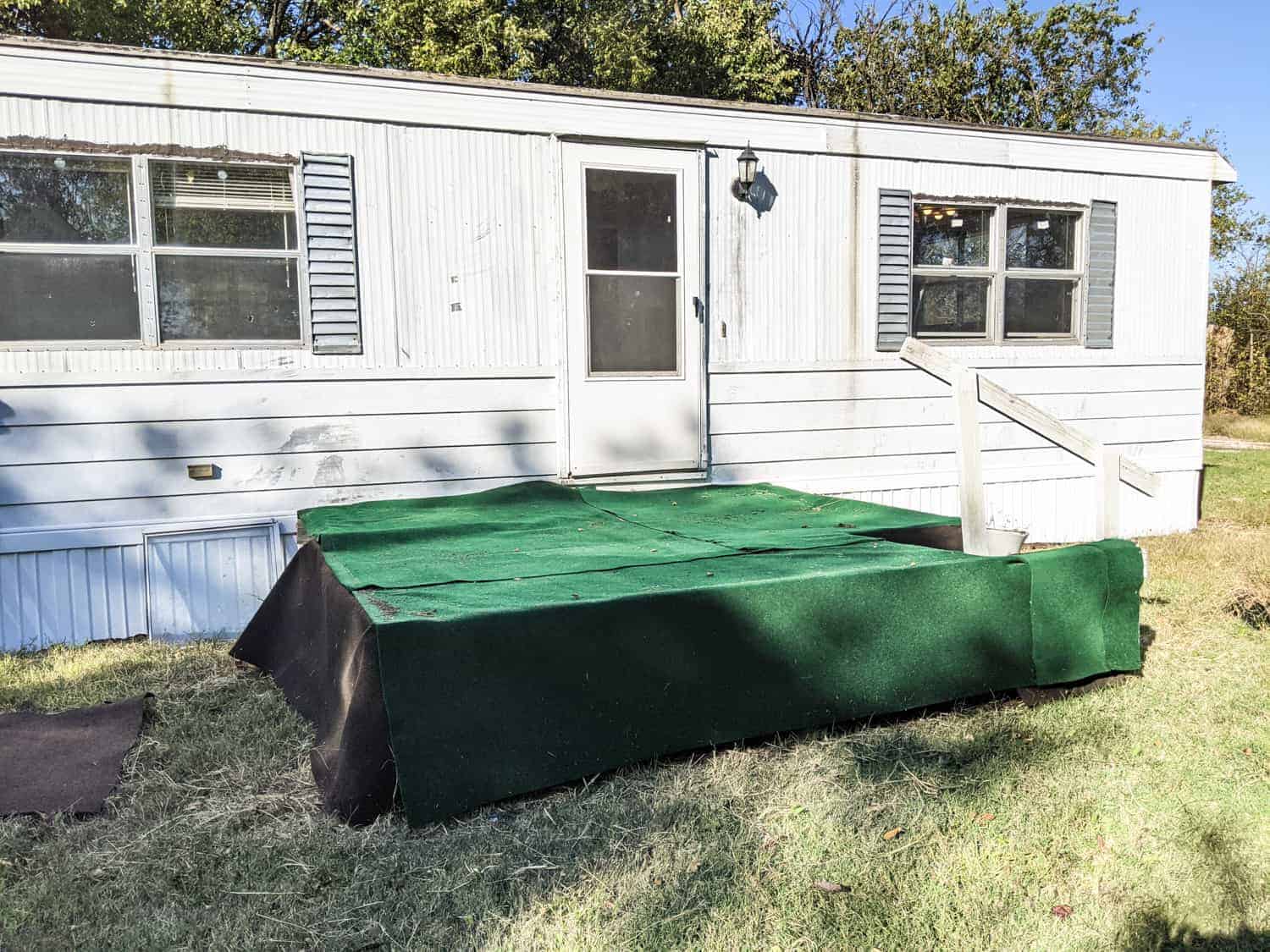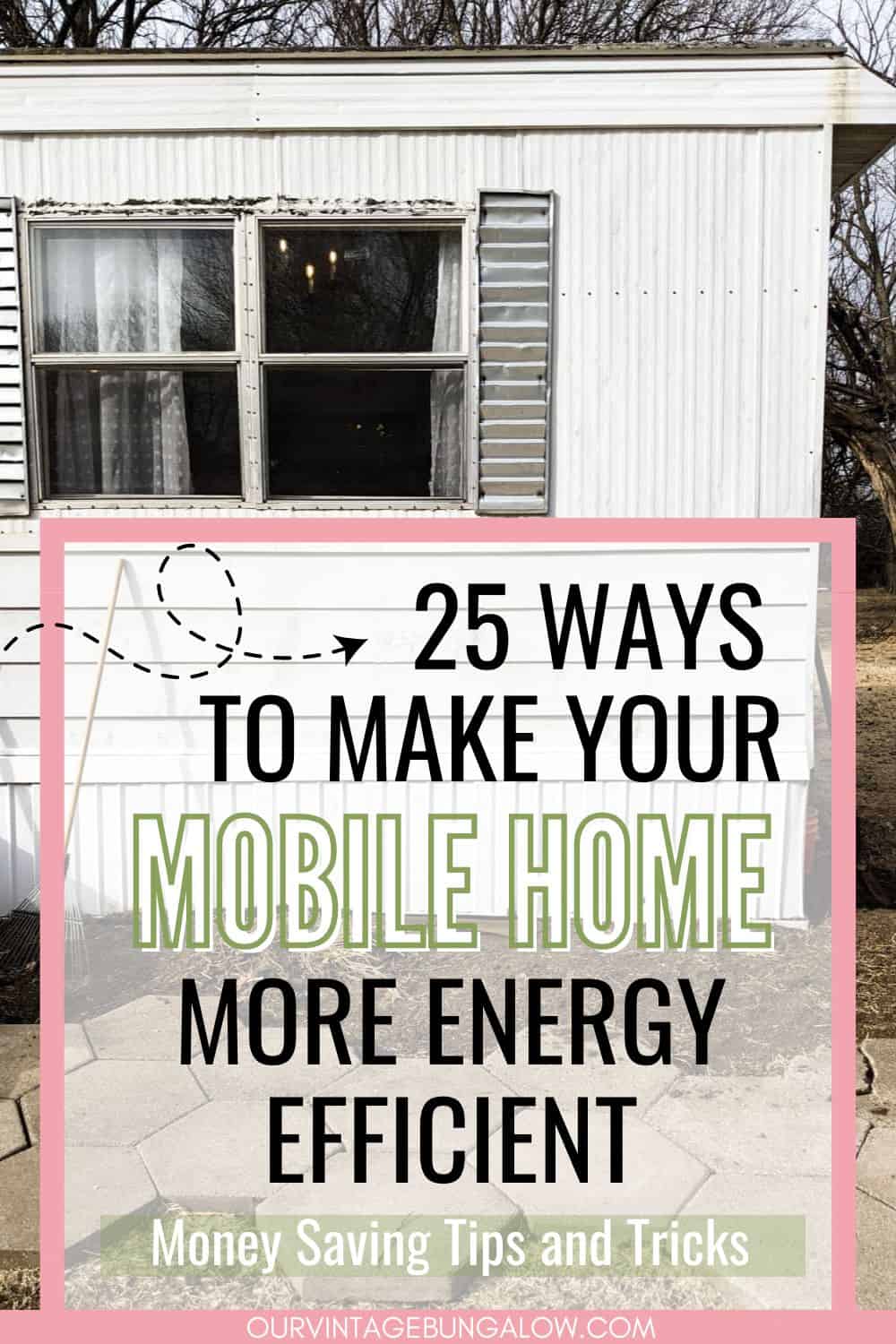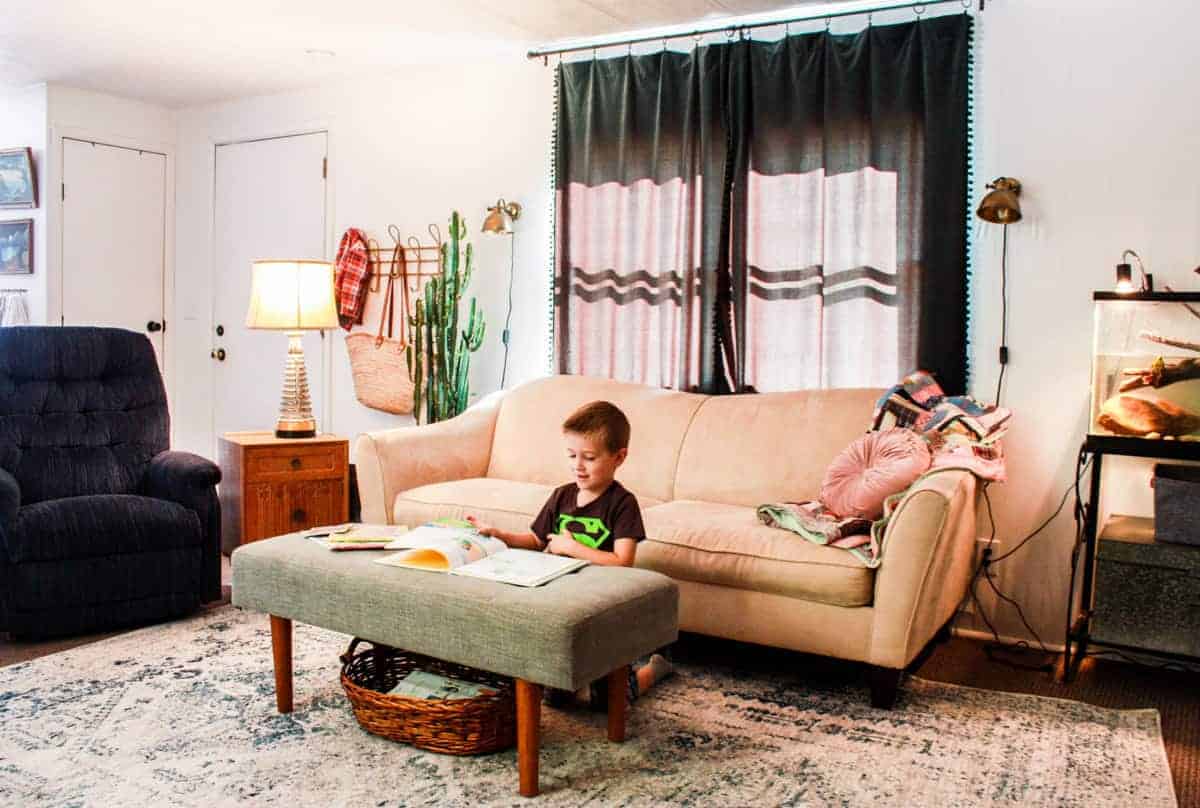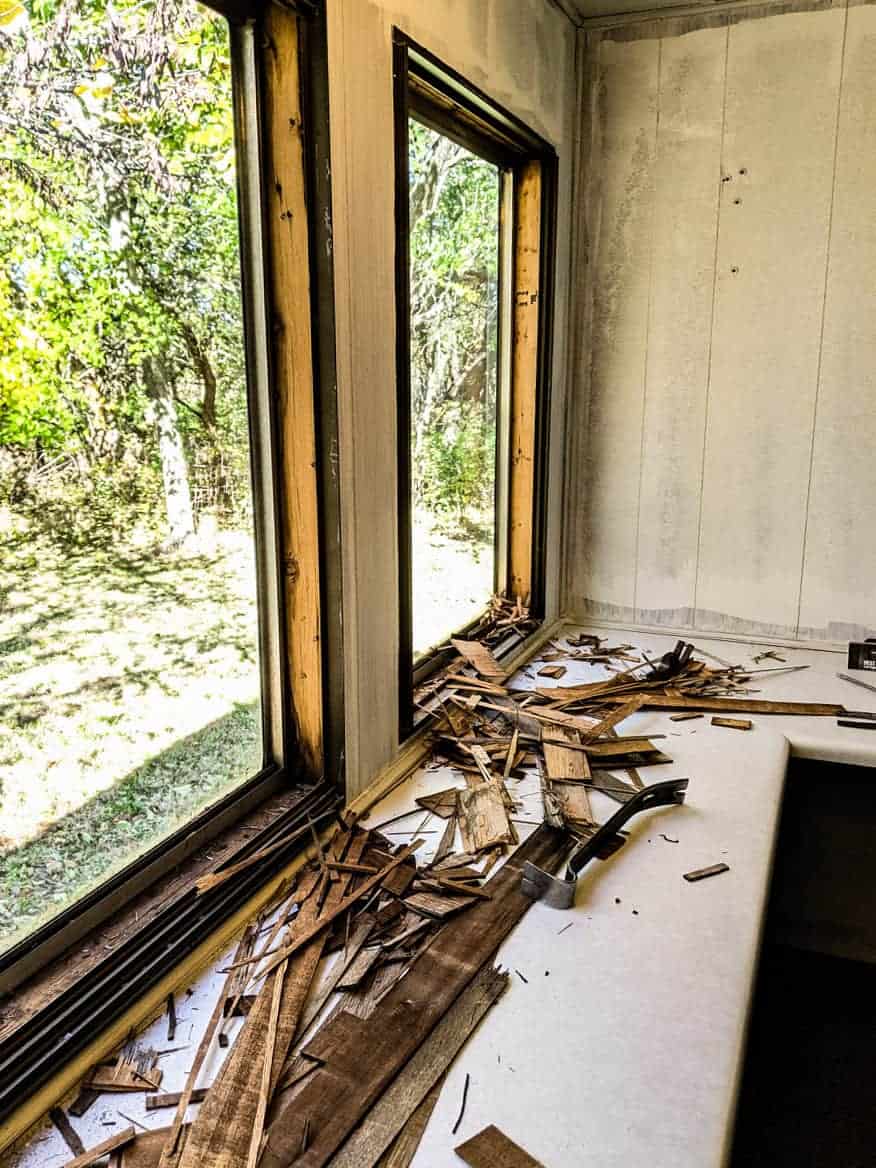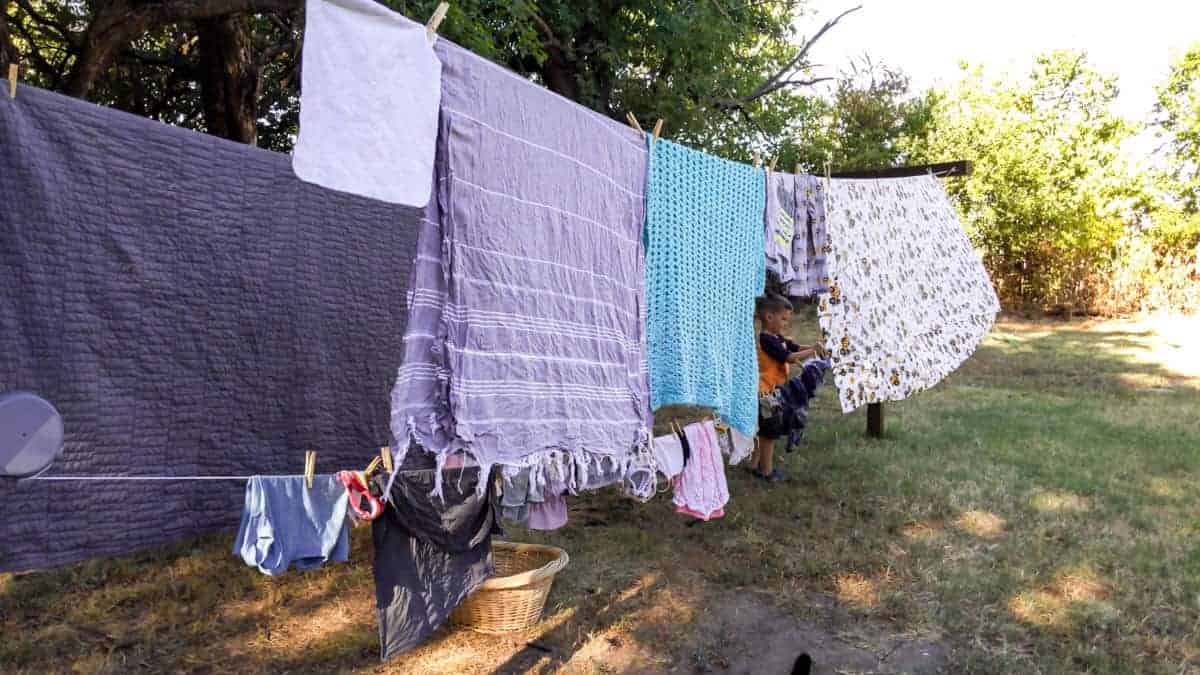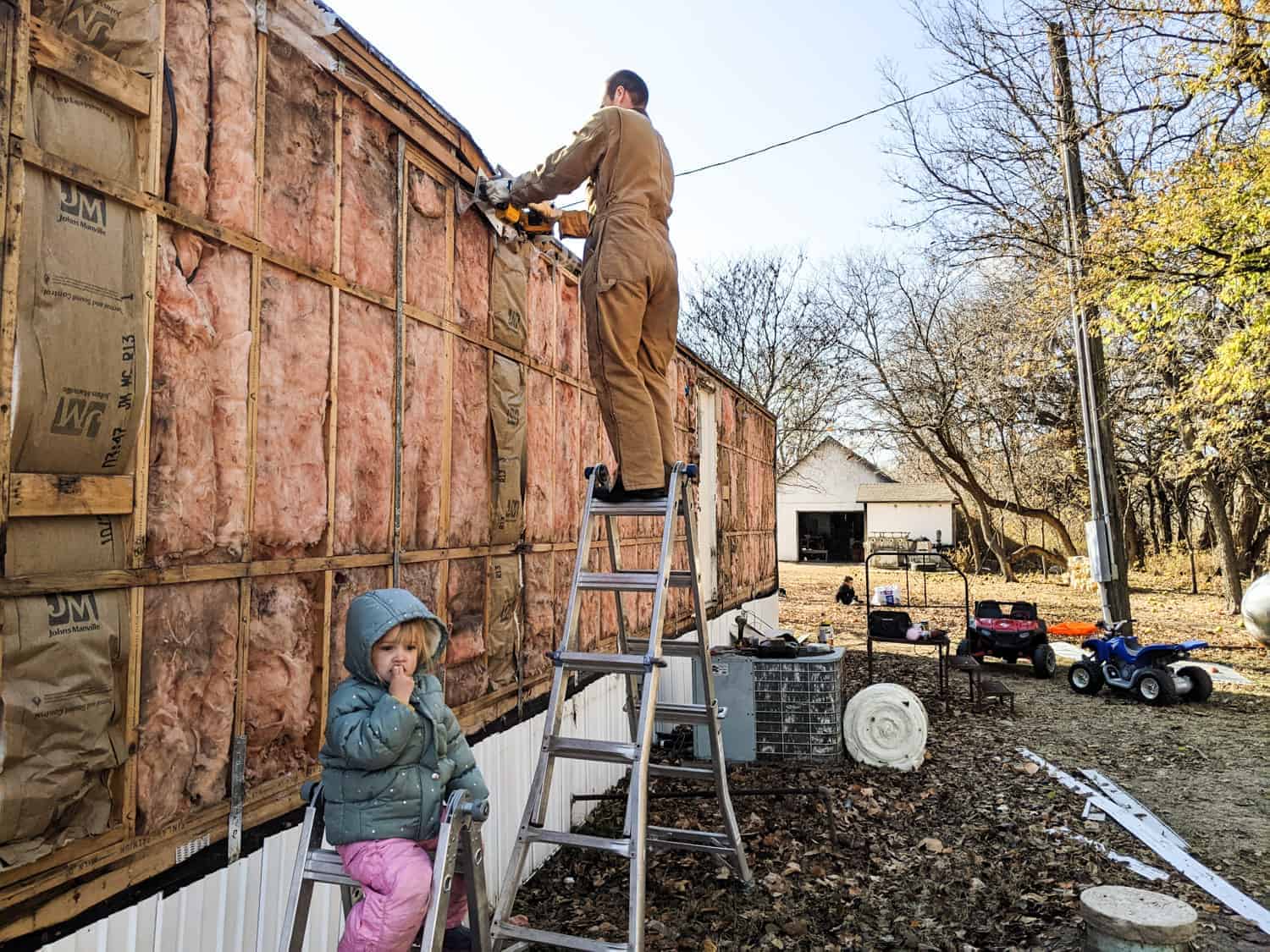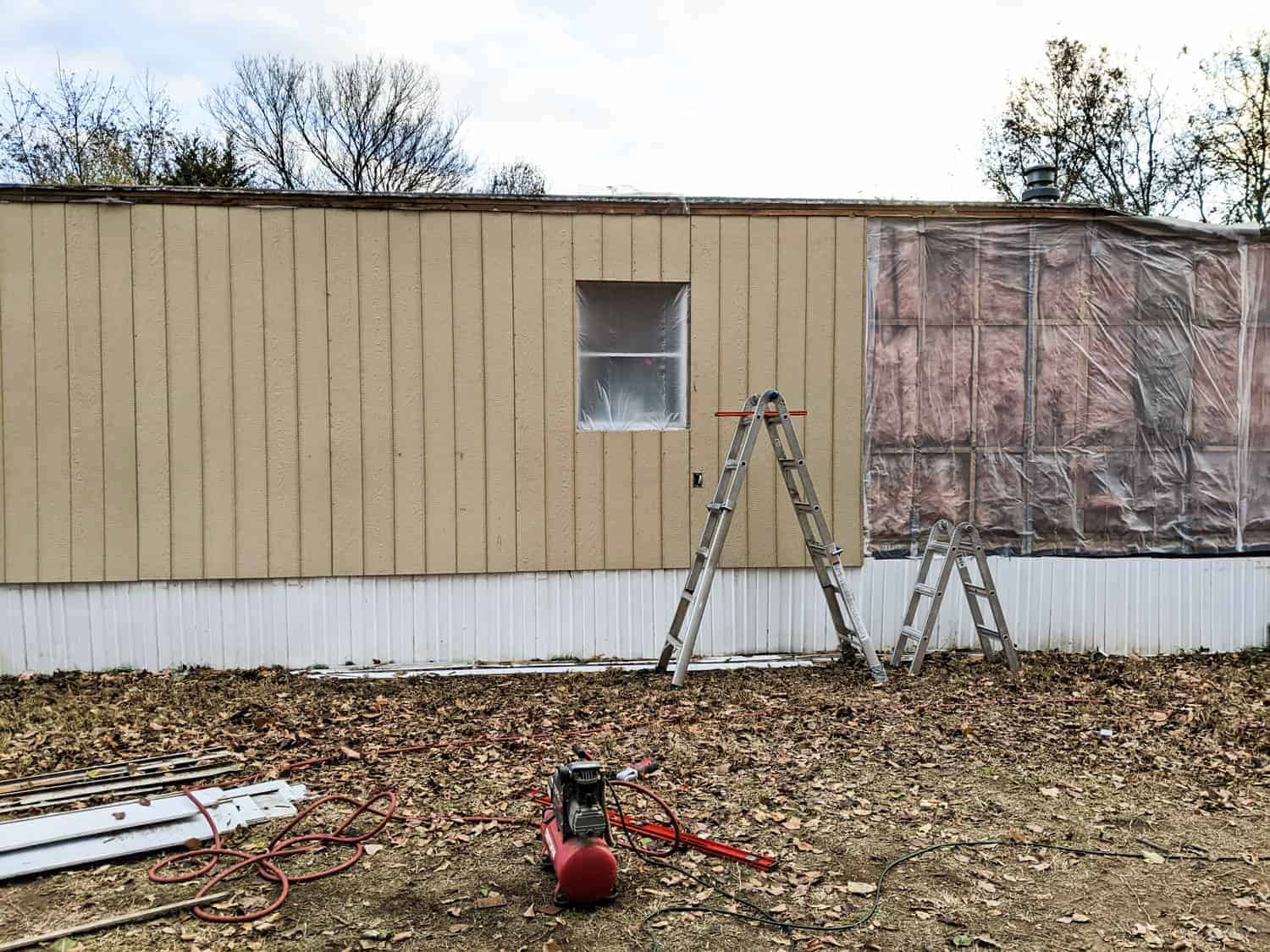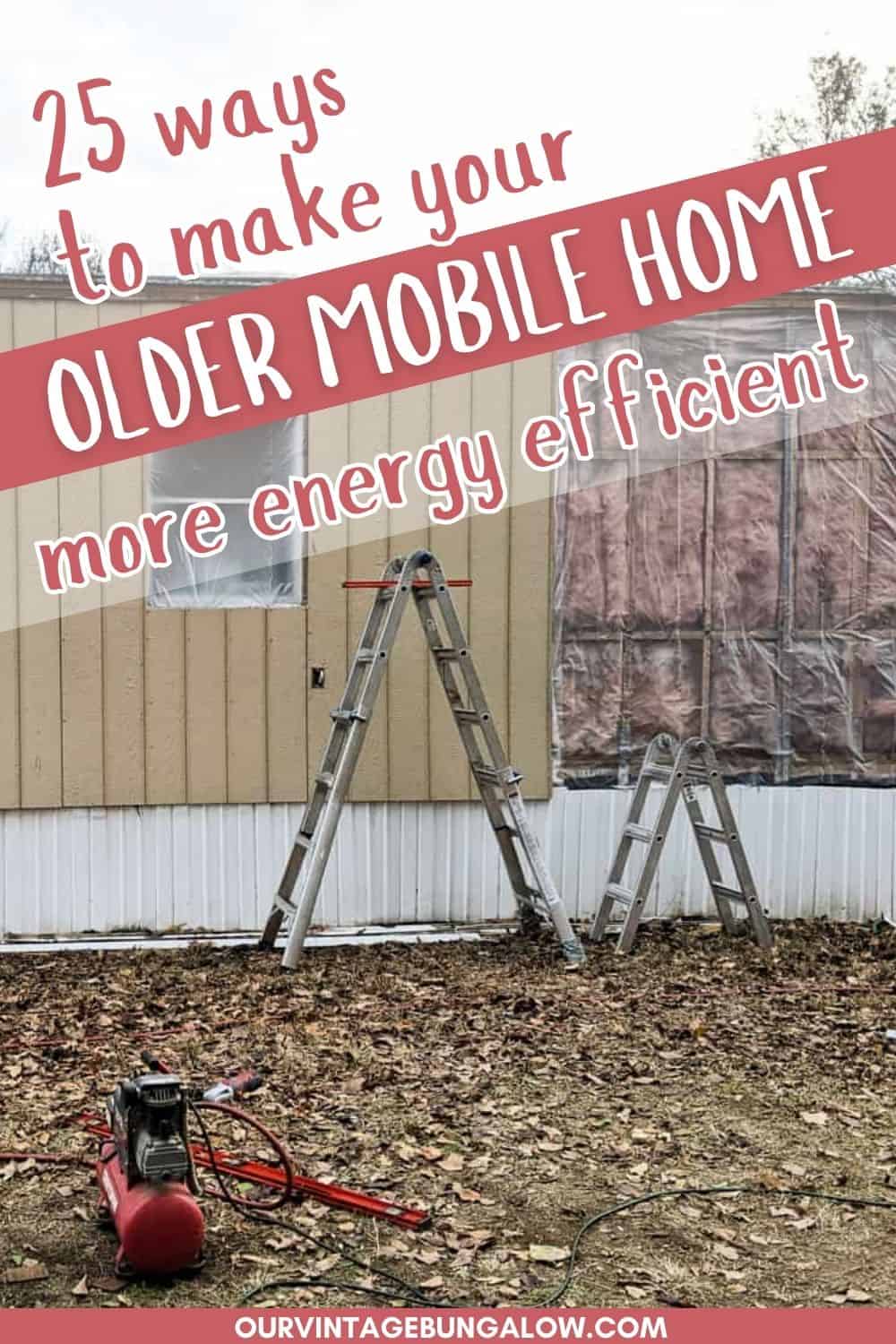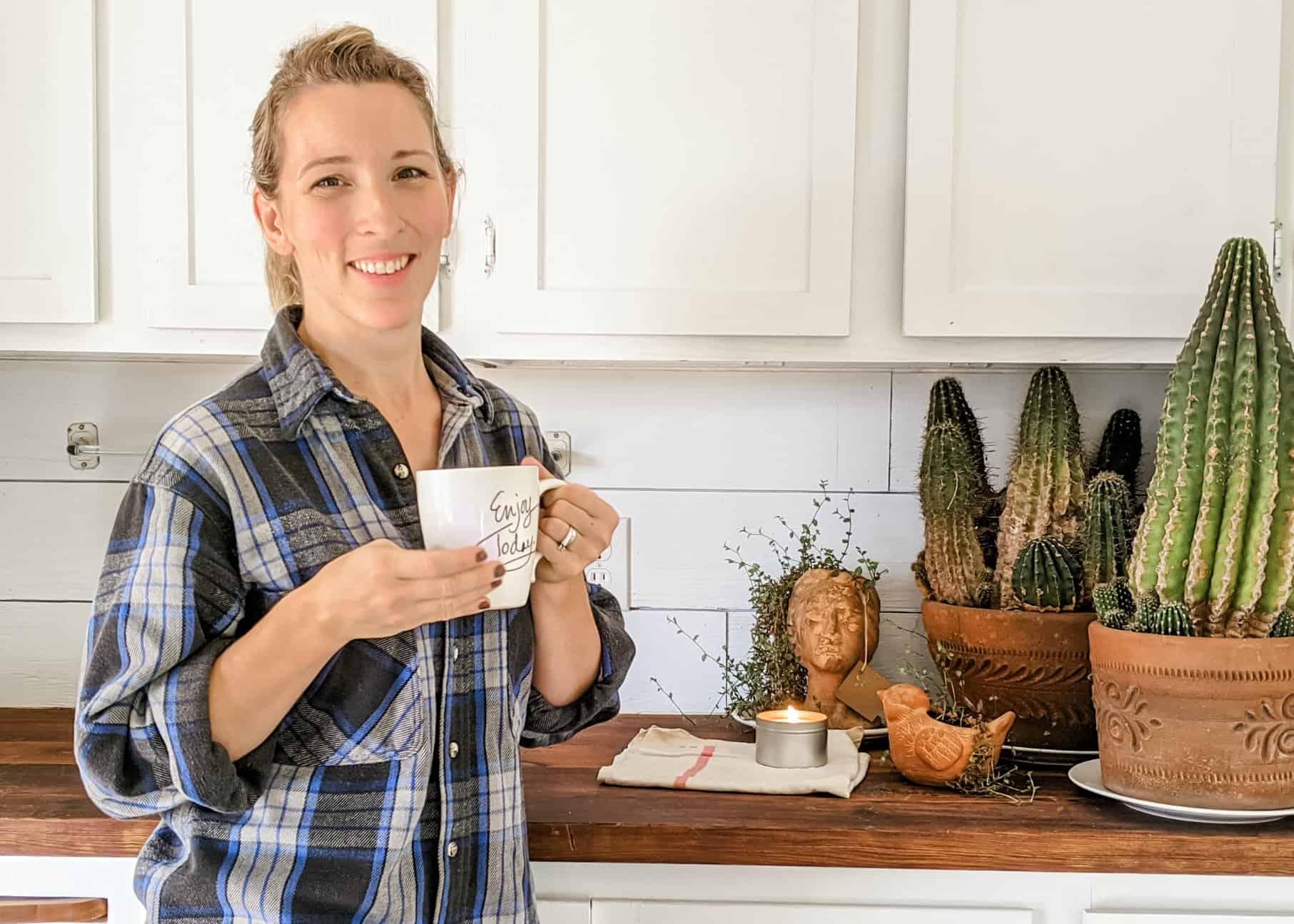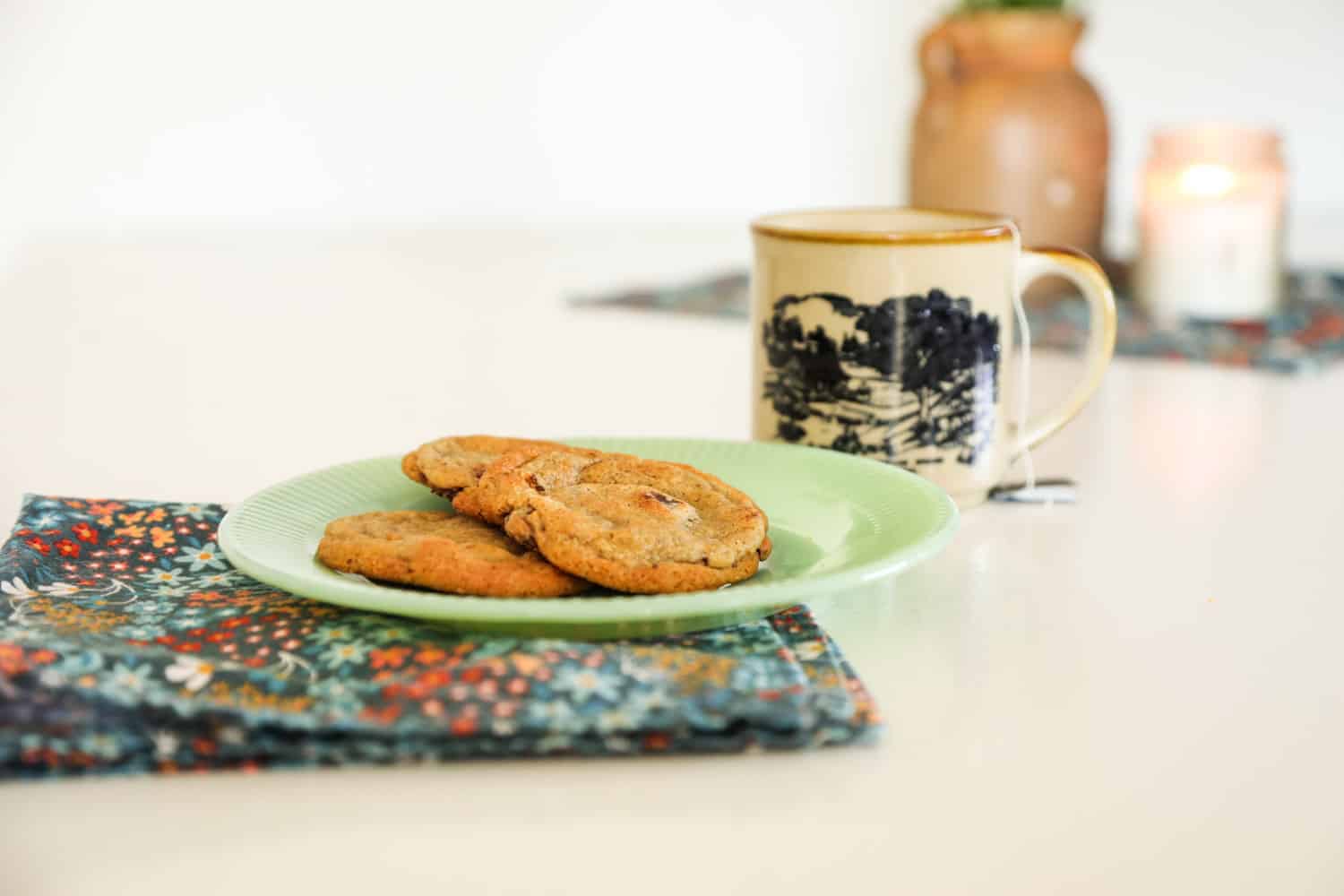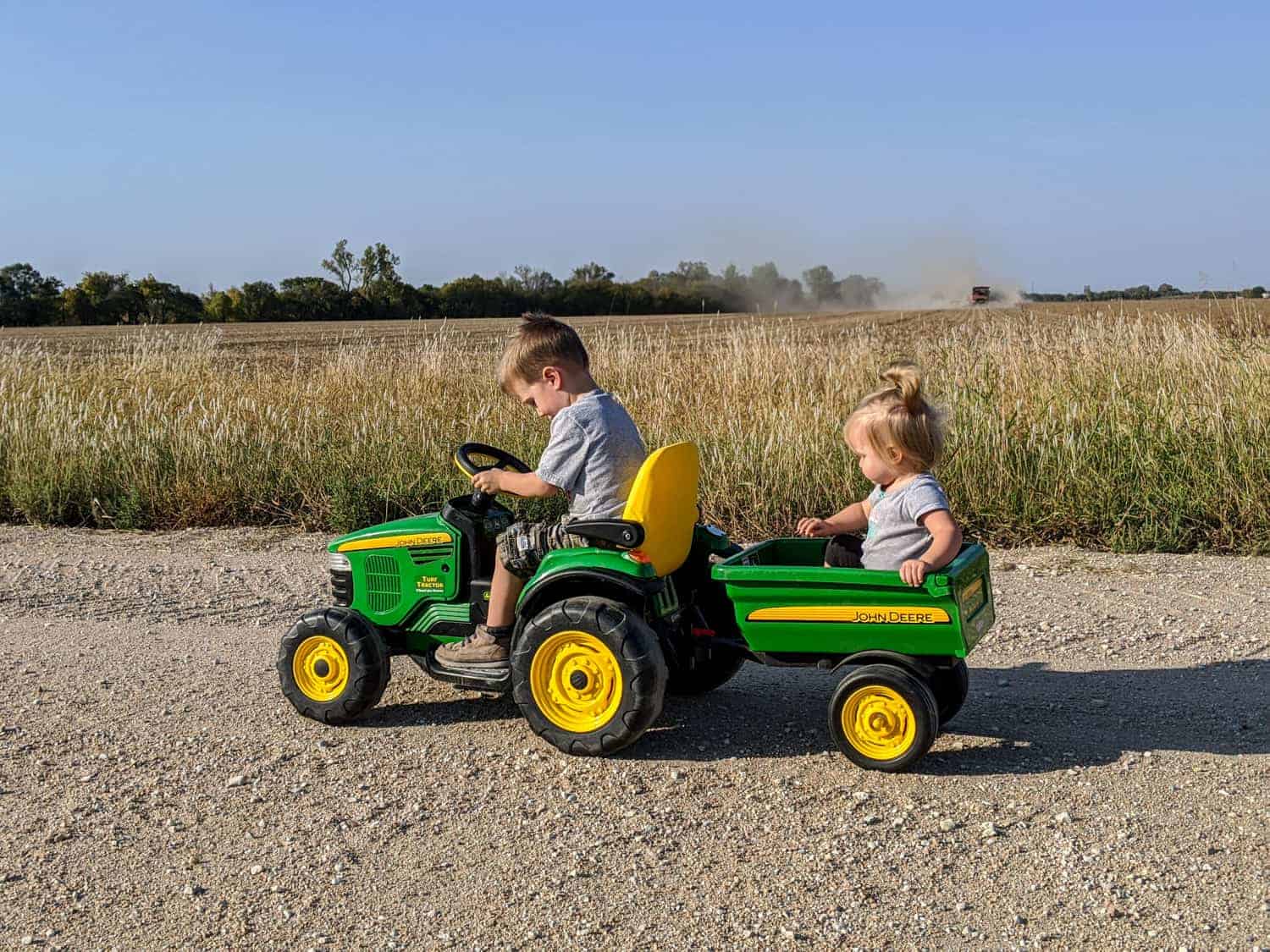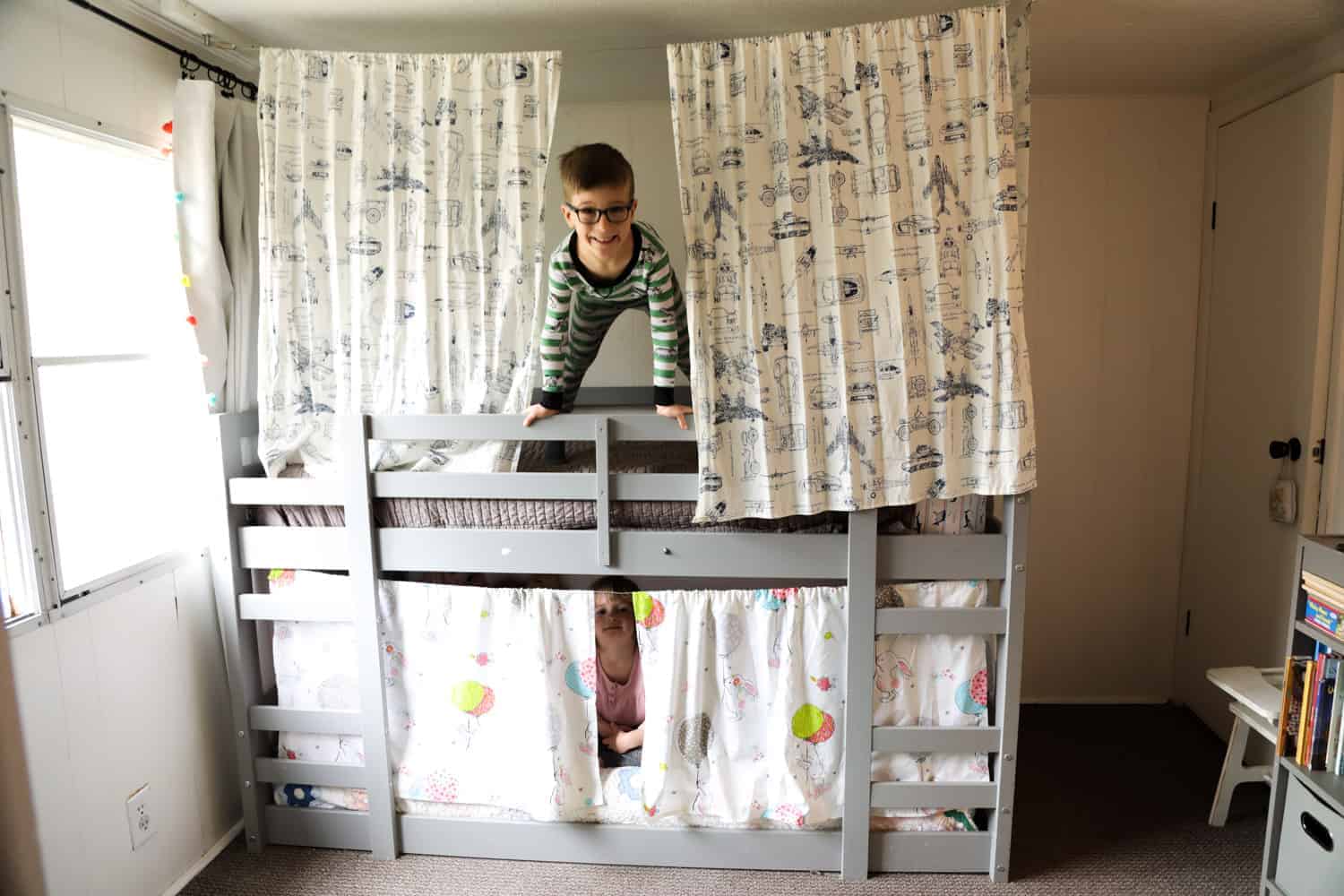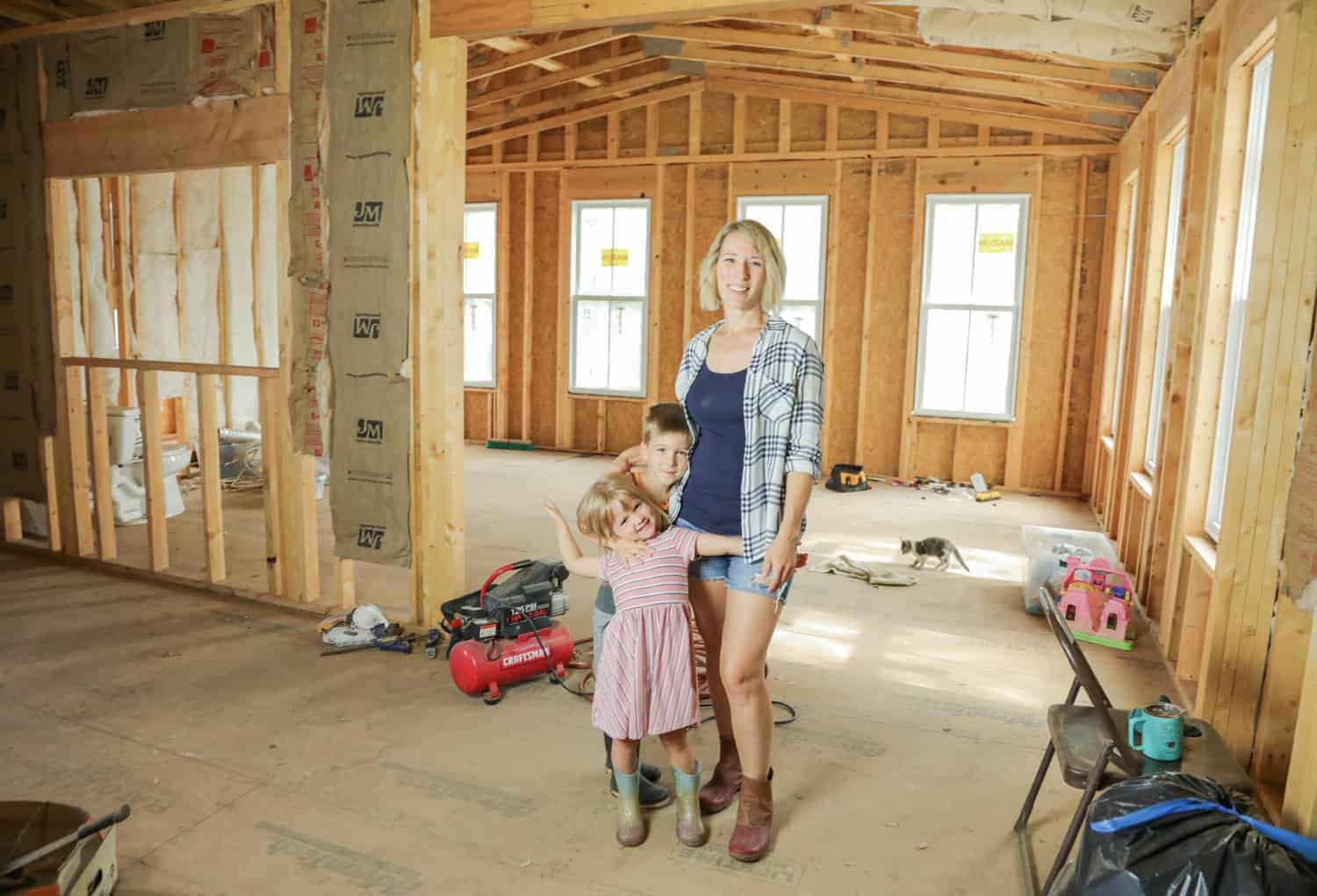If you are living in an older manufactured home, you know first-hand that the energy bills can go through the roof. For a small house, single wide or double wide mobile homes can be crazy expensive to heat and cool. From our experience, here are 25 ways to make your old mobile home more energy efficient. (And most of these ways are inexpensive to implement!)
As an Amazon Associate, I may earn a small affiliate commission through your purchase through any Amazon affiliate links on this post. This is at no additional cost to you. All recommendations are my own because I believe in each product. See my full Privacy Policy here.
In This Article
Our Mobile Home Living Experience
When we bought our farm and fixer upper farmhouse, there was a mobile home in the back. I was very thankful to have it as an extra space, but did not realize we would be living in it for several years during our very drawn out farmhouse renovation.
This single wide mobile home was built in 1979 and was so ugly we had to give her a name…Bertha. (Sorry to all the Berthas out there.) Before we moved in, we did a quick but thorough makeover and updated as much as we could.
What we didn’t realize was that old mobile homes are extremely energy inefficient. Over the past couple years, we have made as many inexpensive updates as possible to lower our heating and cooling bills.
Our Electric Bill Costs
We have a propane furnace and electric AC unit. I will give you a quick overview of our energy costs before and after our improvements to give you a good overview of our energy savings. Our single wide mobile home is 720 square feet.
Summer, 2022
- Electric Cost Per Kilowatt Hour = (around) $0.14
- Thermostat Temperature – 74 degrees (day), 72 degrees (night)
- Our Average Electric Bill (June – September when the AC is running) = $332
Summer, 2023
At the time of writing this, we are nearing the end of summer. We have updated the siding, insulation, roof sealant, skirting insulation, use a clothesline and rarely turn on the oven in the summer. Minor efficiency tips we use are keeping the curtains drawn, caulking cracks around windows and floor and sealing the door. We have had three weeks of temperatures 100 – 108 degrees, so it is hot, hot, hot!
Our Average Electric Bill = (June – September when the AC is running) = $221
Winter, 2022/2023
- Propane cost per gallon = $2.25
- Thermostat Temperature – 70 – 72 degrees
- Our Average Propane Bill (October – March) = $183
My Parent’s Electric Bill for Their House
As a comparison, my parents’ summer electric bill for their well insulated 2400 square foot house 5 miles from us has been averaging $155 per month. (I try not to cry.)
Are Manufactured Homes Energy-Efficient Homes?
Google that question, and the answer you’ll get is “Since the mid-1970’s, manufactured homes are considered very energy efficient.”
I say, “Bah!”
But I’ve only experienced one mobile home that’s 44 years old, and that’s just my opinion. I am sure that they have made major improvements over the past four decades in energy efficiency. I’m sure manufactured homes are considered “energy efficient”…for a manufactured home.
But a manufactured home is a manufactured home. And whether or not you have an extremely efficient mobile home or even a solid house, these 25 ways to make your older mobile home more energy efficient will be helpful in improving your home’s energy efficiency!
Shopping List for 25 Ways to Make Your Older Mobile Home More Energy Efficient
Foam Weather Strips for Around Doors and Windows
Outlet and Light Switch Insulation Pads
25 Ways To Make Your Older Mobile Home More Energy Efficient
Doors and Windows
1. Keep the Curtains Closed During the Heat
Our south facing windows are a heat trap during the summer months. Even during the winter, sitting in front of the window without curtains will make you literally sweat. I keep heavy curtains drawn on most of the south side windows all summer long. In the bedroom, I use blackout curtains. Do I miss the view? Yes, but I don’t miss the cost. The exception I make is in the kitchen where I use sheer curtains because I want to see out.
2. Open the Curtains During the Cold
Like I said, the south windows draw heat, so in the winter I use that to our advantage. I open those curtains right up to soak up as much sun as possible and warm the house naturally in a cost-effective way.
3. Add UV Heat Blocking (Clear) Window Film
We have the original windows on our single wide mobile home. That means our single pane storm windows are extremely inefficient. We have not added window film, but I’m sure this would help tremendously in the summer to maintain a comfortable temperature! Choose a clear UV blocking window film so you have the same view outside as before while also blocking those heat rays.
4. Add Weather Strips Around Doors and Windows to Seal Cracks
If you’re living in an older mobile home, chances are your doors and windows don’t seal the greatest. If you see any light around the edges, make sure to add the foam weather stripping to seal the gaps. And don’t forget about the bottom of the door. We use these draft stoppers on each exterior door so the door opens well with fewer drafts.
5. Repair and Caulk Window Sills
Our window sills are between an inner and outer window. Over time, the outer windows leaked water so much that the sills were pretty rotted and had huge gaps. We immediately replaced rotted wood around the windows, caulked all the small cracks and repainted. Windows are one of the main culprits of energy inefficiency, and sealing the gaps with inexpensive interior caulk (or replacing rotted wood) was a huge help even when we couldn’t afford new windows.
6. Replace the Windows
This is really a big step, and I would only suggest it in certain cases. To be honest, manufactured homes decrease in value, so putting tons of money into them may not pay off. And energy-efficient windows with extra glass panes are a big investment. We will only be living in our single wide for a few years, so the cost is not worth it. However, if you have the original windows and plan on staying in your home for decades this option might work for you. Just don’t get starry eyed over a sales pitch…put the numbers to it to see if the cost will actually benefit you in the long run.
7. Add an Exterior Storm Door
Our exterior door frame is crooked, so currently even with weather stripping, there are gaps around the door. An energy efficient exterior storm door will go a long way in helping to block the heat or cold. Even if your regular door seals well, this is just another layer of insulation.
Lifestyle Hacks
8. Add a Clothesline Outside
This is a lifestyle change that works for us very well. When we were paying close to $500 a month on electricity, we did NOT want to run the dryer to add to the bill or to heat the house. Caleb built a clothesline right outside our back door to go back to the roots of energy efficiency.
See our clothesline tutorial HERE. No space for a full clothesline? No problem. We have tips on how to make a clothesline in small yards or no yards as well!
9. Limit Stove and Oven Use in the Summer
This is another simple lifestyle change you can make to save on your utility bills. Our first summer in the single wide was HOT inside. We had not made very many energy improvements, and our very old air conditioning unit couldn’t keep up with the 100 degree days. That meant that even though we set the thermostat at 74 degrees, it was usually 78 degrees inside. There was no way we could turn on the stove because then it would very quickly raise to the 80’s or even 90’s inside. (Learned that the hard way.)
Even with our energy consumption improvements, reducing stove and oven use in the summer will really help with the cooling bill. We purchased a fairly large countertop toaster oven and also make good use of crockpots or plan summer meals that don’t require much cooking time.
10. Wait to Run the Dishwasher Until Night
Another appliance heat culprit is the dishwasher. Have you felt how much heat comes from the drying function?! We try to limit our dishwasher usage during the summer days and run it at night so the AC doesn’t have to work overtime.
Interior and Exterior Walls
11. Replace the Siding
This is another investment, but with our original 1970’s metal siding, our place was a tin can that heated up like crazy in the summer. We decided to do a DIY replacement of the siding with a composite siding. This insulated the walls way more than the thin metal and also didn’t attract the heat.
12. Add or Replace the Insulation
If you are replacing the siding, it’s a good idea to go ahead and replace or add to the insulation in the walls. You could also do this if you were replacing interior wall material. If you have an older manufactured home, you might need to upgrade the insulation to one that is designed for the max exterior insulation. Exterior wall insulation levels vary from R-13 to R-23 value. Look up the recommendation for your area and go with the highest recommended R number. The price difference between the low and high R value is well worth the investment.
13. Add House Wrap Under the Siding
House wrap has come a long ways in recent years, so if you have an older mobile home, chances are that you could add some while you’re replacing the siding. This breathable material will guard against moisture as well as add another layer of insulation for your thinner than normal walls to decrease your energy use.
14. Insert Foam Insulation Kit in Electrical Outlets and Switch Plates
There are holes in the wall everywhere in your home…and they’re call plug-ins. This leads directly to the un-heated or uncooled air from outside. Insulate these outlets better with inexpensive foam outlet or switch plates insulation. Talk about a cheap and easy solution for poor insulation that can save some extra money!
Roof and Floors
15. Seal the Metal Roof with Acrylic Insulating, Reflective Paint
The roof is the main culprit for energy inefficiency in our mobile home. With its metal covering, the sun beats down and just bakes it. We painted the roof with three coats of reflective elastomeric roof coating. There is a wide price range available. We opted for a medium grade since we couldn’t spend $1000 on it at the time. It has definitely helped with the cooling bill this summer.
16. Insulate the Skirting
We have very thin vinyl skirting around the base of our mobile home. But when you think about it, the hot and especially the cold air can blow right through the thin material. In the winter our floors get very cold. There are several options for insulated skirting or adding additional insulation to your current skirting. While the options can get pricey, if you’re going to stay in the home for any length of time, it can definitely save on your energy usage bill.
17. Caulk all Cracks Around the Floor and Ceiling
When we renovated our mobile home, there were cracks ev-ry-where. Cracks around the doors, around the floor, around the ceiling. It seemed as if these small (and sometimes not so very small) spaces didn’t do much harm. My primary reason for sealing the home was because mice had overrun the place, and I wasn’t about to live with that. However, caulking all the cracks also helped with air leakage tremendously. Even tiny cracks will allow air to come in or escape…air that you’re paying precious money for. Since a tube of caulk is really inexpensive, and requires little work, this is a great way to reduce your energy costs.
18. Add Floor Insulation Under the Mobile Home
I don’t think there is much or any insulation left under the floors of our single wide. Though we haven’t gotten to this yet, in any home it is always a benefit to add floor insulation. Especially in factory-built homes where the flooring is fairly thin, added foam boards, fiberglass or spray insulation will keep your toes warmer and limit the loss of heat and coolness.
19. Add Thick Carpet or Rugs to the Floor
If you’ve already insulated under the house or if you simply can’t afford to do that right now, definitely add rugs throughout your home. Our linoleum gets COLD in the winter, and rugs save our feet from freezing.
Replacing the carpet with a plush carpet and good pad is another way to add warmth in the winter. We aren’t replacing carpet anytime soon, so we’ve even added rugs over our very thin carpet. Someday, however, the flooring will get replaced with something warmer.
Furnace, Air Conditioning and Ductwork Maintenance
20. Have Your Air Ducts Cleaned Regularly
Before we moved in, we hired our air ducts thoroughly cleaned out. This was partially because there were areas in the ductwork that were open holes to the outside, and when there are open holes, mice use them to their advantage. I needed allllllll that taken care of. Also, dirt buildup over time in the ductwork can really limit the efficiency of your forced air. In any home, hire a professional to clean your ductwork.
21. Wrap the Ductwork with Insulation
You may not be aware, but ductwork is typically not insulated. That means that the heat or cool that you’re paying precious money for is rapidly seeping out through thin metal underneath your house. And that isn’t even considering the cracks at the joints that aren’t properly sealed. Consider taping all the ductwork joints and wrapping with ductwork insulation for better protection and fewer air leaks of this precious air from your cooling system.
22. Change Your Filters
This is another must do for every home’s furnace efficiency, but if it weren’t for Caleb, I would forget it often. Make sure you regularly change your mobile home furnace filter and even vacuum the furnace. It can’t work properly for you if it is trying to blow air through clogged filters. And when a furnace works harder, it increases the wear and tear on the unit.
23. Add Air Vent Returns to the Home for Better Air Flow
We had one working air return in the hallway of our single wide. There were others throughout the house in the floor, but at some point during its 40 year life, someone had disconnected them and just left them open to the mice and whatever other creatures wanted to come in. Yuck! Since we blocked up those floor air returns, Caleb added a wall air return in the living room and one of the bedrooms that backed up to the utility closet air return. (He cut a square hole in the wall and just added an air return vent cover.) When air can flow freely through the house, it is always better for your heating and cooling electricity bills.
24. Install a Tankless Water Heater
Tankless water heaters are getting better throughout the years. When you need to replace your water heater, consider getting a tankless. While it does burn a lot of energy at each demand for hot water, a tankless system reduces the need to keep 50 – 80 gallons of water super hot all the time. (That is a lot of energy you’re paying for!)
25. Wrap Your Water Heater with Insulated Jacket
A big loss of energy is from the water heater. If you have a traditional water heater, it is working overtime to keep this huge tank at a very hot temperature all day every day. In the winter especially, nature is working against your water heater in this area. Consider buying an insulated jacket to wrap around your heater to help out and save some electricity.
And that wraps up my 25 ways to make your older mobile home more energy efficient. Many of these are from our actual experience with living in our 1979 single wide mobile home. And some of them are on our to-do list (while we also keep working on our farmhouse renovation). Every little penny counts, especially during these years of rising inflation, and we are doing our best to lower our utility cost and impact on the environment through increasing our mobile home energy efficiency!
Read More About Small Home Living and Mobile Home Renovation
DIY Mobile Home Remodeling Ideas
How to Decorate a Mobile Home Living Room
Mobile Home Mid Century Style Kitchen Makeover Before and After
64 Storage Ideas for a Small Home (Vintage Inspired)
How to Be Content Living in an Ugly House
How Much Does a 10×10 Kitchen Remodel Cost?

